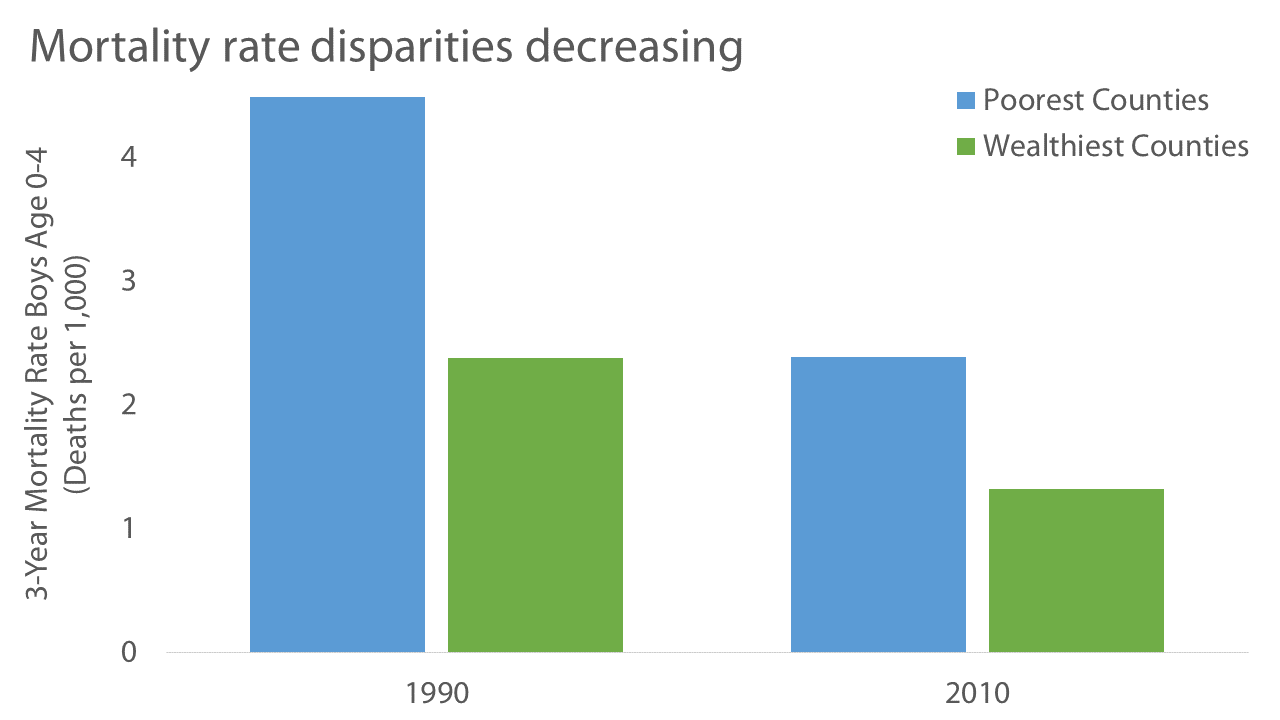When researchers looked at mortality rates of younger Americans across the country, they found that policy choices are shrinking the health-based inequities that exist in our society. Their findings remind us that we’ve come a long way in the struggle for health equity, while also impelling us to continue working to ensure that someday, someone’s zip code and skin color won’t play a role in determining their life span.
Mortality rates measure the share of people in a group who die within a given time period. After looking at the way those rates changed over time, the authors found that income still matters — our youngest boys are still more likely to die in the poorest places in America — but the disparity in mortality rates between rich and poor counties for some groups has been cut nearly in half.
For example, the researchers found that in 1990, 2.38 out of every 1,000 boys ages 0 to 4 in the country’s richest counties died within three years. Over the next 20 years, that three-year mortality rate shrank to 1.32. Meanwhile, the youngest boys in the country’s poorest counties had a mortality rate of 4.49 in 1990; in 2010, it had dropped to 2.39.

Source: “Mortality and Inequality: The Good News From a County-Level Approach” by Janet Currie and Hannes Schwandt
America made similar equity gains across racial lines, too, but the data contain a chilling reminder of how important race remains in our country: black boys living in the wealthiest parts of America are still less likely to make it to adulthood than white boys living in the nation’s poorest counties.
The authors of the study point out that over the past 20 years disparities shrank as public investments in health and well-being increased. In that time span, the United States increased the availability of affordable health insurance for pregnant women and children through Medicaid and the State Child Health Insurance Program (SCHIP), helped Americans with low incomes stock their fridges through federal food aid, and supported families’ efforts to make ends meet through strengthened tax credits for working families.
Minnesota has been a national leader on many of these fronts — for example, by crafting innovative paths towards affordable health insurance. Such investments are now paying dividends represented by actual human lives, and show that America (and Minnesota) can narrow racial and income disparities when we make smart policy choices.
-Ben Horowitz